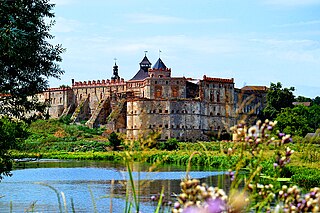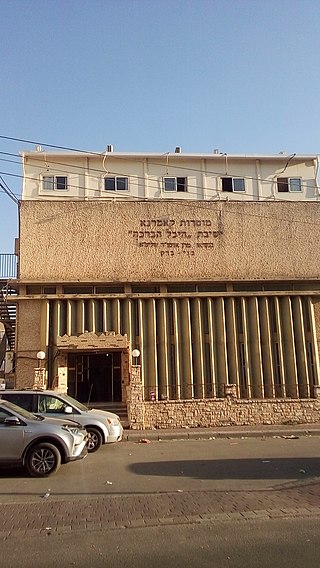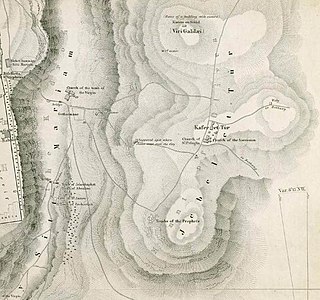
Adar is the sixth month of the civil year and the twelfth month of the religious year on the Hebrew calendar, roughly corresponding to the month of March in the Gregorian calendar. It is a month of 29 days.

Dov Ber ben Avraham of Mezeritch, also known as the Maggid of Mezeritch or Mezeritcher Maggid, was a disciple of Rabbi Israel ben Eliezer, the founder of Hasidic Judaism, and was chosen as his successor to lead the early movement. Dov Ber is regarded as the first systematic exponent of the mystical philosophy underlying the teachings of the Baal Shem Tov, and through his teaching and leadership, the main architect of the movement. He established his base in Mezhirichi, which moved the centre of Hasidism from Medzhybizh, where he focused his attention on raising a close circle of disciples to spread the movement. After his death the third generation of leadership took their different interpretations and disseminated across appointed regions of Eastern Europe, rapidly spreading Hasidism beyond Ukraine, to Poland, Galicia and Russia.

Medzhybizh, formerly Mezhybozhe, is a rural settlement in Khmelnytskyi Oblast, western Ukraine. It is located in Khmelnytskyi Raion, 25 kilometres from Khmelnytskyi on the main highway between Khmelnytskyi and Vinnytsia at the confluence of the Southern Buh and Buzhok rivers. Medzhybizh was once a prominent town in the former Podolia Province. Its name is derived from "mezhbuzhye", which means "between the Buzhenka Rivers". It is known as the birthplace of the Jewish Hasidic mystical religious movement. Medzhybizh hosts the administration of Medzhybizh settlement hromada, one of the hromadas of Ukraine. Current population: 1,237 ; 1,731,.
Schisms among the Jews are cultural as well as religious. They have happened as a product of historical accident, geography, and theology.
Devekut, debekuth, deveikuth or deveikus is a Jewish concept referring to closeness to God. It may refer to a deep, trance-like meditative state attained during Jewish prayer, Torah study, or when performing the 613 commandments. It is particularly associated with the Jewish mystical tradition.

Ohel is a structure built around a Jewish grave as a sign of prominence of the deceased. Ohelim cover the graves of some Hasidic Rebbes, important rabbis, tzadikim, prominent Jewish community leaders, and biblical figures. Typically a small masonry building, an ohel may include room for visitors to pray, meditate, and light candles in honor of the deceased.

Menachem Mendel Torem of Rimanov also known as Mendele Rimanover was a famous Hasidic Rebbe and one of the first five distributors of the Hasidic movement in Poland and Galicia together with Rabbi Yaakov Yitzchak of Lublin, Rabbi Yisrael Hopstein, Rabbi Avraham Yehoshua Heshel of Apta, and Rabbi Kalonymus Kalman Epstein.

Yitzhak Aharon Korff is the present Rebbe of Zvhil – Mezhbizh. Since 1975 he has been the Chaplain of the City of Boston and spiritual leader of Congregation Bnai Jacob, Zvhil–Mezhbizh Beit Medrash of Boston, Miami, and Jerusalem, serving also with the Chief Rabbis of Israel as Spiritual Leader of The Jerusalem Great Synagogue. He is a dayan of the BaDaTz Boston Beth din and Vaad HaRabbonim. He is also principal of Korff Associates, consultants in business, diplomacy and international law and relations, Consul to the government of Austria and publisher of the Boston-based Jewish newspaper The Jewish Advocate.

Mezhbizh is the name of the town of Medzhybizh in the present Ukraine which is significant as both the source of a Hasidic dynasty that bears its name and as a symbolic name for the roots of Hasidism.
Rabbi Boruch of Medzhybizh (1753–1811), was a grandson of the Baal Shem Tov. Reb Boruch was the first major "rebbe" of the Hasidic movement to hold court in Mezhbizh in his grandfather's hometown and Beis Medrash, which he inherited.

The Rapoport-Bick dynasty was the most important of all the non-chasidic rabbinic dynasties of Medzhybizh, in Ukraine. The Rapoport dynasty traces its roots back to Rabbi Jacob Emden (1697–1776) who was involved in the Frankist debates of 1757 and his father Rabbi Tsvi Hirsh Ashkenazi, known as the Chacham Tsvi (1660–1718). The Rapoports themselves are a long distinguished rabbinic family that traces its roots back to Central Europe and Northern Italy in the 15th century.
The following charts illustrate the family of Rabbi Yisrael Baal Shem Tov, the founder of Hasidic Judaism.
Moshe Chaim Ephraim, also known as Ephraim of Sudilkov, was born in Medzhybizh, Poland 1748 and died there on the 17th of Iyar in 1800. He was best known as the Baal Shem Tov's grandson and for the work Degel Machaneh Ephraim, first published in Korets, 1810.

Komarno is a dynasty of Hasidic Judaism founded by Rabbi Aleksander Sender Safrin of Komarno, Ukraine.
Yisroel Meir Gabbai is a Breslover Hasid who travels the world to locate, repair and maintain Jewish cemeteries, kevarim (gravesites) and ohels of Torah notables and tzaddiks. He is the founder of Agudas Ohalei Tzadikim.

The Jewish Cemetery on the Mount of Olives is the oldest and most important Jewish cemetery in Jerusalem. The Mount of Olives has been a traditional Hebrew/Jewish burial location since antiquity, and the main present-day cemetery portion is approximately five centuries old, having been first leased from the Jerusalem Islamic Waqf in the sixteenth century. The cemetery contains anywhere between 70,000 and 150,000 tombs, including the tombs of famous figures in early modern Jewish history. It is considered to be the largest and holiest historical Jewish cemetery on earth.

A Baal Shem was a historical Jewish practitioner of Practical Kabbalah and supposed miracle worker. Employing various methods, Baalei Shem are claimed to heal, enact miracles, perform exorcisms, treat various health issues, curb epidemics, protect people from disaster due to fire, robbery or the evil eye, foresee the future, decipher dreams, and bless those who sought his powers.
Israel ben Eliezer, known as the Baal Shem Tov or BeShT (בעש"ט), was a Jewish mystic and healer who is regarded as the founder of Hasidic Judaism. A baal shem tov is a "Master of the Good Name," that is, one able to work miracles using the secret name of God. Other sources explain his sobriquet as arising from a reputation of being a saintly, or superior, miracle-worker, hence he was given the nickname Baal Shem Tov, that is, the "good Baal Shem".
Rabbi David Leykes was a Hasidic Av Beit Din in the city of Bar and one of the disciples of Baal Shem Tov.











